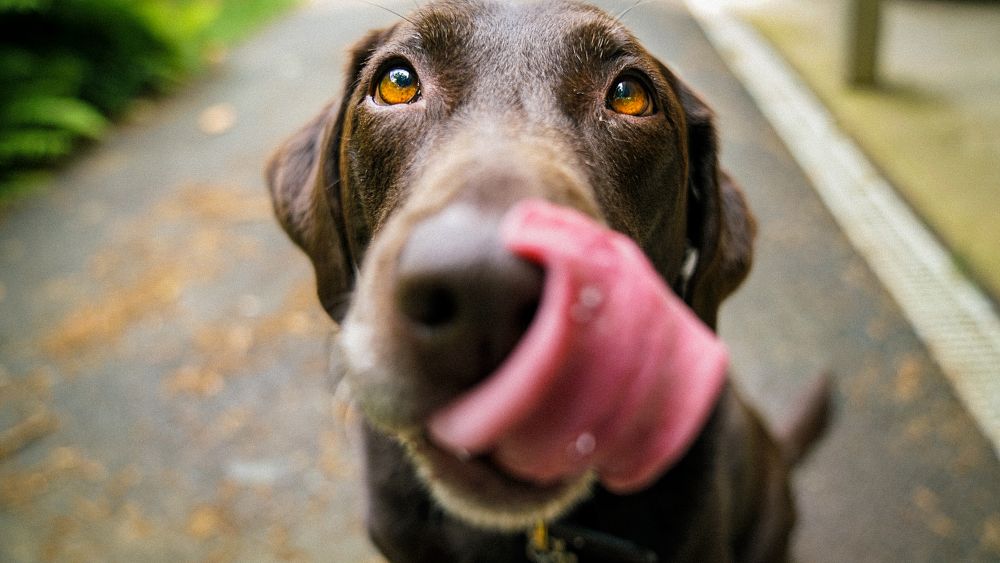
[ad_1]
The biggest threat to global health could potentially come from man’s best friend. This is what new research suggests after the discovery of multidrug resistant bacteria in dog food, sparking fears of a possible international health crisis.
A new paper, presented at the European Congress of Clinical Microbiology and Infectious Diseases (ECCMID), warns that “the tendency to feed dogs raw foods may fuel the spread of antibiotic-resistant bacteria.”
Researchers at UCIBIO, Faculty of Pharmacy at the University of Porto in Portugal, examined various samples of dog food from supermarkets and pet stores.
The study found that enterococci, a genus of bacteria commonly found in human intestines, were present in more than half of the samples analyzed.
The concern stems from the fact that this type of bacteria is often inherently resistant to antibiotics, which means that certain species of enterococci can lead to dangerous epidemics. For example, over the past two decades in the United States there have been clusters of infections related to VRE (vancomycin resistant enterococci) – often initially acquired in a hospital.
It is estimated that 700,000 people worldwide die from drug-resistant infections each year. The UN specifies that this figure could rise to 10 million by 2050 without sufficient action. Antibiotic resistance is classified by World Health Organization (WHO) as one of the greatest threats to global public health.
“This study shows that international brand dog foods are a vehicle for clinically relevant enterococci carrying resistance to last resort antibiotics and relevant virulence genes, thus positioning pet foods as an important source of spread of antibiotic resistance, ”says the document, co-authored by Dr Ana Freitas, Dr Carla Novais, Dr Luísa Peixe and colleagues from UCIBIO.
Dr Freitas and his team examined 55 dog food samples (22 wet, 14 raw frozen, 8 dry, 7 treats and 4 semi-wet), from 25 brands available in Portugal and the rest of Europe. . Frozen raw foods contained beef, goose, duck, salmon, turkey, chicken, lamb and vegetables.
More than half (54%) tested positive for enterococci, with 40% of this type of bacteria resistant to several types of antibiotics. Almost a quarter have been shown to be resistant to linezolid, a drug considered to be an ‘antibiotic of last resort’ – used only when other drugs have failed to treat an infection. Resistance to this specific antibiotic is particularly alarming.
The rise of raw dog food
Raw dog food, often sold in frozen pieces, has grown rapidly in popularity over the past five years. Google data shows a sharp increase in public searches for the product in 2020, especially in the UK.
Owners believe that feeding dogs raw meat is healthier for their pets, claiming to see improved dental health, increased energy levels, and healthier coat and skin. However, some vets warn that there are health risks to the entire household and to dogs with weakened immune systems.
The UCIBIO study revealed that in all frozen raw samples analyzed, multidrug-resistant enterococci were present, including bacteria resistant to linezolid. Only three of the uncrude samples contained multidrug-resistant enterococci species.
The authors of the article warn that with around 90 million companion dogs in Europe, and nearly 500 million worldwide, dog food can be a dangerously overlooked source of antibiotic resistance worldwide.
“The close contact of humans with dogs and the marketing of the brands studied in different countries pose an international public health risk,” adds Dr. Freitas.
“European authorities must raise awareness of the potential health risks when feeding pets raw food and manufacturing dog food, including ingredient selection and hygiene practices, must be reviewed .
“Dog owners should always wash their hands with soap and water immediately after handling pet food and picking up droppings.”
Antibiotic resistance throughout the meat industry
While the recent UCIBIO study focuses on mass-produced dog food, drug-resistant bacteria are also a growing concern in meat intended for human consumption.
For decades, antibiotics have been used for non-therapeutic purposes in animal production. In order to meet consumer demands, antimicrobial drugs have been used to promote growth in some animals – as well as to increase milk production in cows. In 2001, it was estimated that about 90 percent of antimicrobial use in the United States was for non-medical reasons in animal agriculture.
This has long been a problem around the world, not just in the United States. However, Sweden, Denmark and a handful of other countries began to tackle the practice of animal agriculture 40 years ago. The EU banned the use of antibiotics for growth purposes in 2006, and the US did the same in 2017.
however, research suggests that two-thirds of antibiotic use worldwide is in farm animals. Even though the regulations have helped curb the practice (antibiotic use in cattle has fallen by 50 percent over the past five years in the UK) – it is still far from fully resolved.
In Oceania and Asia, the rate of sale of antibiotics on the farm per unit of livestock is four times higher than in Europe.
Fundamentally, antibiotic resistant bacteria are a concern throughout meat production – whether it is food for humans or pets.
[ad_2]
Source link